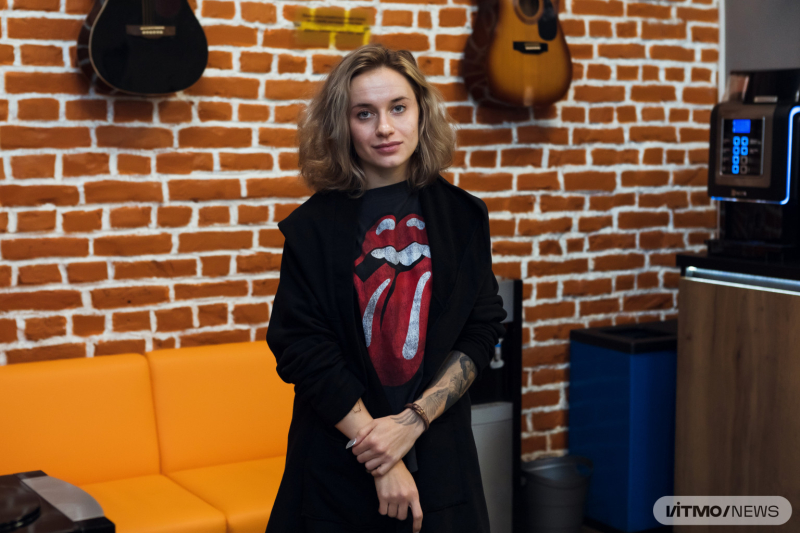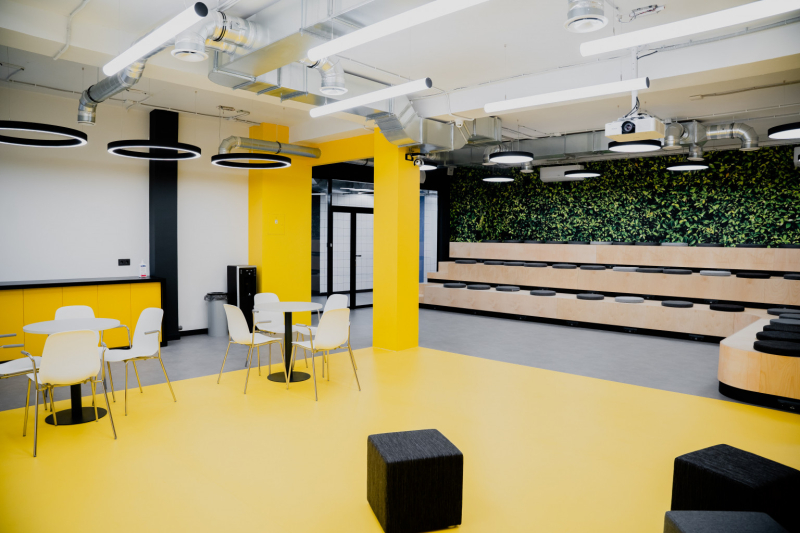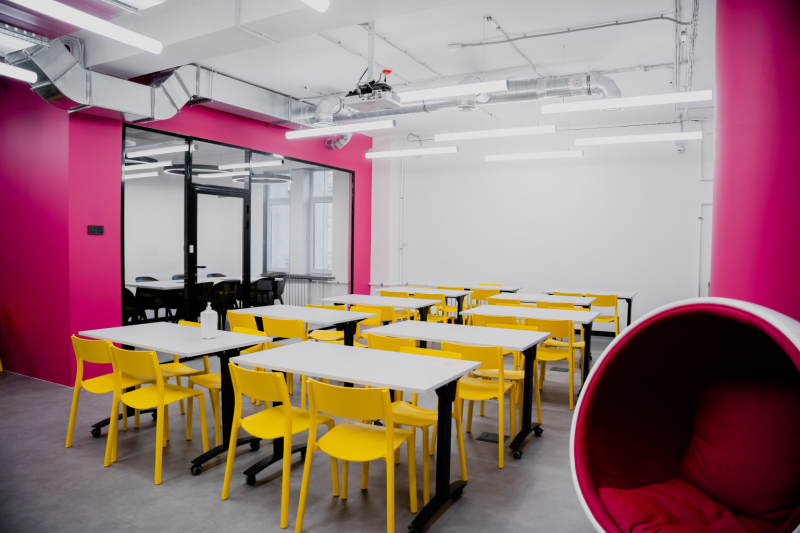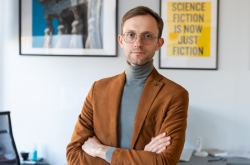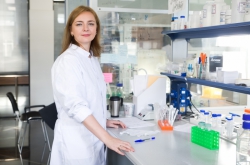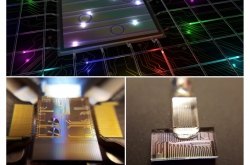You work in molecular design. How would you describe this field to someone who doesn’t know anything about it?
In a nutshell, I model real-life and hypothetical structures, identify their properties, and predict how they can be used in various industrial or scientific fields. Imagine a set of spheres, each representing an atom or ion and each with its own big number of properties. My job is to use these objects to assemble crystals, molecules, and new materials.
Tell us a little more about the applications of molecular design.
First, with molecular design we can predict the properties of a material even if its structure hasn’t yet been extensively studied. For instance, if we have a 3D material, there’s no guarantee that its 2D counterpart will exhibit the same properties. In order to test this fact, we will need to generate the material in 2D, identify its properties, and compare it to the 3D form. After that, we share this data with experimenters who make the decision to use this material or not.
A second scenario where we’d turn to molecular design is practical: say, we have a reaction, and we need to understand the principle behind it. For this purpose, I create initial agents A and B, design the reaction’s path, and monitor the way it actually unfolds. For instance, we study the absorption reaction, during which a molecule settles onto a surface; for this, we observe the changes in the properties of the surface and the molecules. This approach is often used in manufacturing, catalysis (to accelerate or slow down chemical reactions), and medicine. For example, in 2014 I studied the oxidation reaction of NO into NO2 on the surface of a gold and graphene cluster. This reaction would help lower the toxicity of car emissions, which would benefit the environment.
How do you contribute to these solutions?
I model a material’s seen structure and then use quantum chemistry software to optimize it: position atoms in a way where the outside effects on them are minimal. Next, I calculate their properties, including their charge, spin state, band gap, and others.
In terms of practical applications, before I came to ITMO, I worked with Italian experimenters who studied the process of absorption of the 6T molecule on the surface of LSMO oxide (lanthanum strontium manganite oxide). For this project, we needed to see how the molecule is packed on the oxide’s surface and how this changes the molecule’s charge. As a result, we demonstrated that this heterostructure can be a promising material for spintronics. In our work, we combined experimental data with the theoretical kind, provided by me.
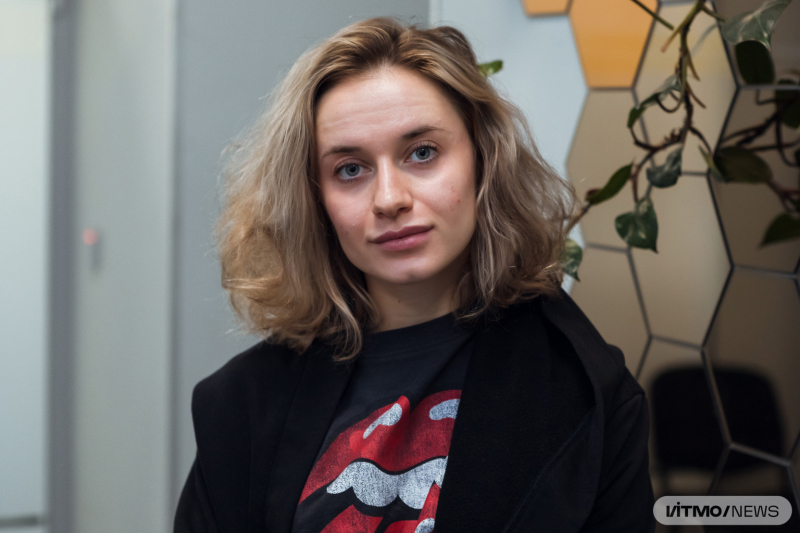
Iuliia Melchakova. Photo by Dmitry Grigoryev / ITMO.NEWS
Why did you choose to pursue a career in science and molecular design in particular?
I got my Bachelor’s in chemistry and Master’s in physical chemistry from Siberian Federal University in Krasnoyarsk. I have also always enjoyed working with computers. As a first-year student, I tried my hand at experiments, but the world of quantum chemistry had quickly won me over, so at the start of my second year of studies I started working in the field of theoretical modeling – and haven’t stopped since. Next year will mark the tenth anniversary of my quantum science career, which gets more interesting every year.
After I graduated from Siberian Federal University, I won a scholarship to study in South Korea, where I defended my PhD thesis titled Theoretical study of surface reaction pathways: adsorption and migration of transition metal on top of graphene and g-C3N4.
How would you rate your experience in South Korea?
There were highs and lows; I had some difficulties with my social life. Any kind of adaptation to another culture isn’t easy, but science is international, so all in all it was an interesting experience. It was great to communicate with people from a different culture and use English in my daily life.
In Korea, they have a different approach to education. For instance, there is an emphasis on self-study – we were often trusted to work on our projects ourselves. In this sense, I could really rely on the fundamental education I acquired in Russia, so I had no difficulties with my studies. By the time I came to Korea, I had already had some articles published, so I didn’t find it hard to start working as a researcher. My Korean professors were surprised by the level on which I was able to defend my results.
Korean students usually don’t have this background, they require some time to pick up a certain minimum. This is one reason why they are so hard-working and spend so much time in the lab. For instance, I often collaborated with experimentalists, whose particle synthesis experiments could take ten hours at a time. They had to be present at their workplace during all these hours.
How did you get from South Korea to ITMO? Why did you apply for the ITMO Fellowship Program?
First, I moved to St. Petersburg, which I consider one of Russia’s most rapidly developing cities. Here, I learned about ITMO’s School of Physics and Engineering, where there are researchers working in my field of specialization. Later, I discovered the ITMO Fellowship Program and through it, I was able to join the group headed by Mikhail Rybin and continue my research. I love the friendly atmosphere at ITMO, the people here are like a family. I also like that there are many events, such as research seminars and trips to the countryside.
What do you do as part of the program?
I take part in various projects: for instance, I am working on nanoscale materials. One of my latest projects focused on europium absorption on graphene of different morphologies – I analyzed the way this interface’s properties will change depending on the morphology.
The results of my studies at ITMO will contribute to the development of spin memory devices. Spintronics is a branch of quantum electronics that uses electron spins (pulse momentum of elementary particles) and charge to acquire, process, and transfer information in solid-state devices. With this technology, it will be possible to make computers faster.
Additionally, my work can be applied in chemistry. For example, molecular modeling can help develop smaller, less toxic, and more durable catalysts. These will make the reactions faster or their yields – greater, while requiring less additional materials; such catalysts can be used in production and in labs.
What would be the result of your work at ITMO?
First of all, I want to continue with my research and turn my results into high-quality research papers. Moreover, I would like to find new collaborators, network, and acquire the experience of making computations and designing complex structures that I haven’t worked with before. Every new project or collaborator is its own new challenge.
